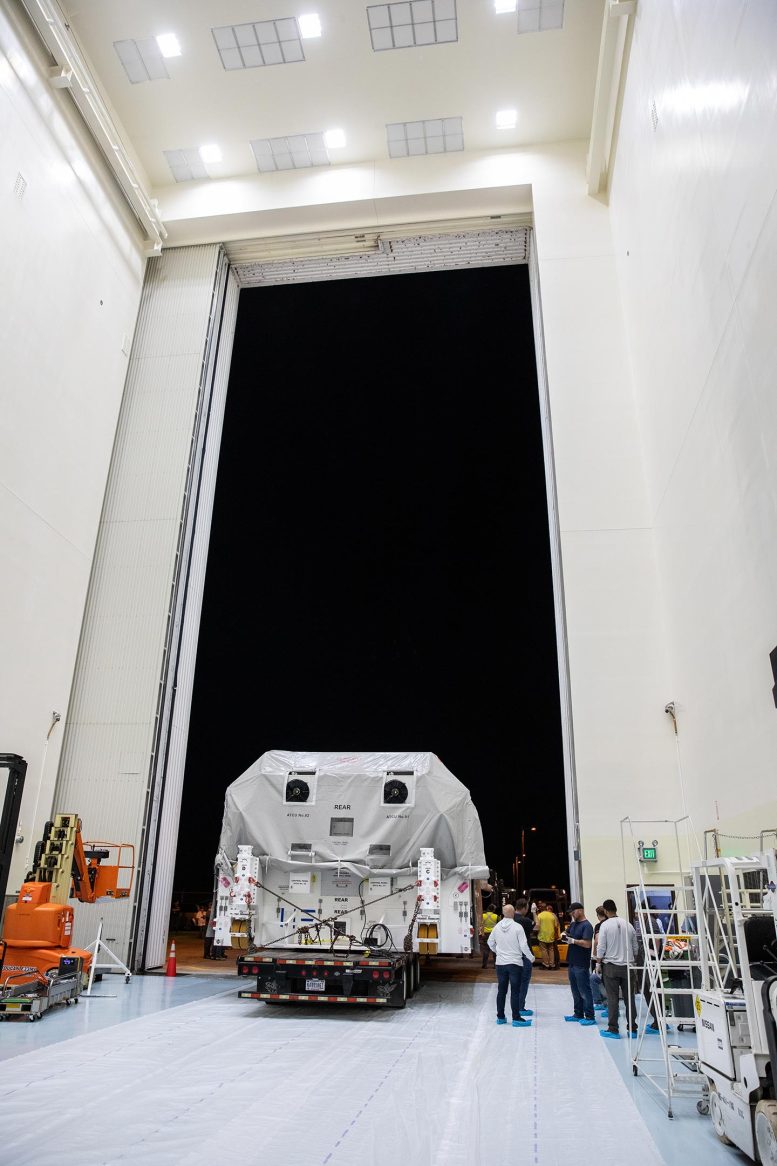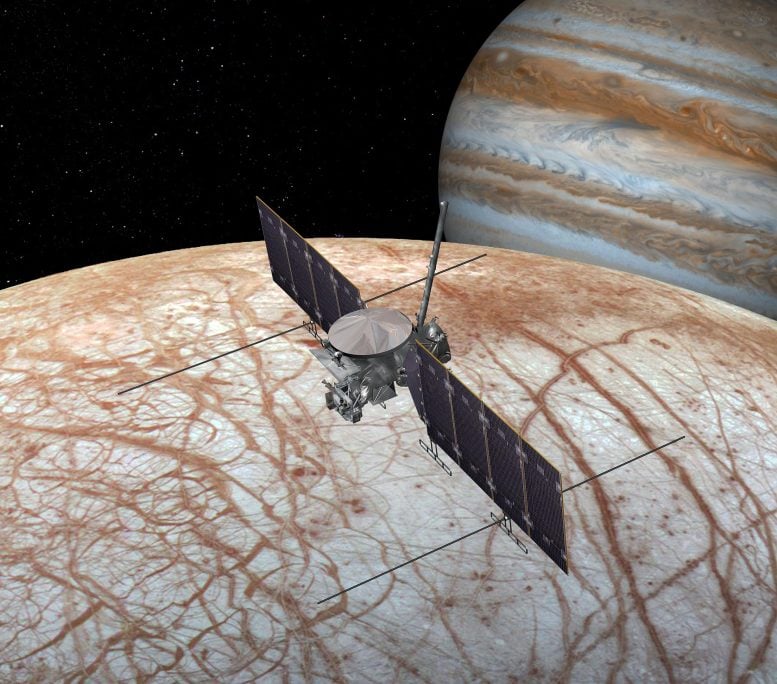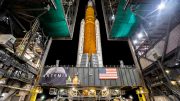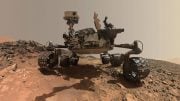
Technicians offload NASA’s largest planetary mission spacecraft, Europa Clipper, from a U.S. Air Force C-17 Globemaster III transport aircraft at the Launch and Landing Facility at NASA’s Kennedy Space Center in Florida on May 23. Credit: NASA/Isaac Watson
Assembled at NASA’s Jet Propulsion Laboratory in Southern California, the Europa Clipper spacecraft has arrived at the Kennedy Space Center in Florida to prepare for its mission to explore Jupiter’s moon Europa. It will study the moon’s surface, ocean, and atmosphere using advanced scientific instruments.
NASA’s Europa Clipper, a spacecraft built to investigate Jupiter’s icy moon Europa and its potential to support life, arrived in Florida on Thursday, May 23. The spacecraft, assembled at NASA’s Jet Propulsion Laboratory (JPL) in Southern California, landed aboard a United States Air Force C-17 Globemaster III aircraft at the Launch and Landing Facility at NASA’s Kennedy Space Center.
The mission aims to gather detailed measurements of the moon’s surface, interior, and space environment by performing approximately 50 close flybys, some as low as 16 miles (25 kilometers) from the surface of Europa, which holds a global ocean underneath its ice shell.

A U.S. Air Force C-17 Globemaster III transport aircraft carrying NASA’s largest planetary mission spacecraft, Europa Clipper, arrives at the Launch and Landing Facility at the agency’s Kennedy Space Center in Florida on May 23. Credit: NASA/Isaac Watson
Mission Management and Preparations
“My job for Europa Clipper is to ensure the team meets all the ground and flight requirements to place the spacecraft in the proper orbit to initiate the long journey to Jupiter,” said Armando Piloto, Europa Clipper mission manager for NASA’s Launch Services Program. “The team is excited that the spacecraft is in Florida for processing. We’re pairing Europa Clipper with a fully expendable SpaceX Falcon Heavy rocket to ensure it provides the required performance to explore a destination very far away from Earth.”
Teams at Kennedy spent several hours offloading Europa Clipper before transferring it to the Payload Hazardous Servicing Facility, where they will process the spacecraft and perform final checkouts as part of prelaunch preparations.
Solar Arrays and Instrumentation
Europa Clipper joins the spacecraft’s two five-panel solar arrays that arrived at Kennedy in March. The arrays, each 46.5 feet (14.2 meters) long, will collect enough sunlight to power the spacecraft on its way to Jupiter’s moon. Technicians will install the arrays on the spacecraft before launch.
The spacecraft was designed to withstand the pummeling of radiation from Jupiter and gather the measurements needed to investigate Europa’s surface, interior, and space environment.
Europa Clipper has nine dedicated science instruments, including cameras, spectrometers, a magnetometer, and an ice-penetrating radar. These instruments will study Europa’s icy shell, the ocean beneath, and the composition of the gases in the moon’s atmosphere and surface geology, and provide insights into the moon’s potential habitability. The spacecraft also will carry a thermal instrument to pinpoint locations of warmer ice and any possible eruptions of water vapor. Strong evidence shows the ocean beneath Europa’s crust is twice the volume of all the Earth’s oceans combined.

NASA’s largest planetary mission spacecraft, Europa Clipper, arrives at the Payload Hazardous Servicing Facility at the agency’s Kennedy Space Center in Florida on May 23. Credit: NASA/Isaac Watson
Journey and Launch
The Europa Clipper mission demonstrates NASA’s commitment to exploring our solar system and searching for habitability beyond Earth. The data will contribute to our understanding of the Jovian system and will help pave the way for potential future missions to study Europa and other potentially habitable worlds.
Europa Clipper is expected to reach the Jupiter system in April 2030, and it will accomplish a few milestones along the way, including a Mars flyby in February 2025 that will help propel the spacecraft toward Jupiter’s moon through a Mars-Earth gravity assist trajectory.
“After two years of painstaking work on the spacecraft here at JPL, with the help of our partners, it was bittersweet to see the spacecraft encased in its shipping container and on its way to Florida,” said Jordan Evans, Europa Clipper project manager at JPL. “But we already have Europa Clipper engineers and technicians at Kennedy who are welcoming this precious cargo and are set to accomplish the final assembly and testing so that we’re ready for launch.”
Final Preparations
NASA and SpaceX are targeting launch aboard a Falcon Heavy rocket from Launch Complex 39A at Kennedy later this year. The launch period opens on October 10, 2024. After testing and final preparations are complete, the spacecraft will be encapsulated in a protective payload fairing and moved to the SpaceX hangar at the launch complex.
Managed by the California Institute of Technology (Caltech) in Pasadena, California, JPL leads the development of the Europa Clipper mission in partnership with the Johns Hopkins Applied Physics Laboratory (APL) in Laurel, Maryland, for NASA’s Science Mission Directorate in Washington. The main spacecraft body was designed by APL in collaboration with JPL and NASA’s Goddard Space Flight Center in Greenbelt, Maryland. The Planetary Missions Program Office at NASA’s Marshall Space Flight Center in Huntsville, Alabama, executes program management of the Europa Clipper mission.
NASA’s Launch Services Program, based at Kennedy, manages the launch service for the Europa Clipper spacecraft.










Be the first to comment on "Exploring Jupiter’s Icy Moon: NASA’s Europa Clipper Prepares for Launch"